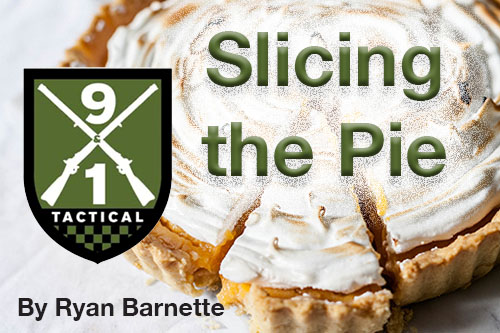
Q: How can I make good decisions under pressure, or in a crisis?
A: Train your brain.
Whether you’re a youngster with no life experience, or a highly trained, seasoned, steely-eyed dealer of death, you’re capable of making poor choices under pressure. We’d likely prefer the latter coming to our rescue if bullets start to fly, but everyone is fallible. The difference between the trained and the untrained is that trained people understand how decisions are made. Therefore, they can think faster under stress and are more likely to persevere under extreme circumstances.
In a 1976 essay titled “Destruction and Creation,” United States Air Force Colonel and military strategist, John Boyd – affectionately referred to as “Genghis John” by some of his cohorts – first presented his interpretation of the decision-making process, specifically as it pertained to arial combat. The “O.O.D.A. Loop,” as he aptly named the decision-making cycle, is an acronym for Observe – Orient – Decide – Act, and is still widely taught to military, law enforcement, and other combat-ready entities. The cool thing is it applies to all of us.
We complete the O.O.D.A. Loop hundreds, if not thousands, of times each day. We aren’t always conscious of the decisions we make, but we make them, nonetheless. When we think about observation, we tend to think about what we see, but an observation can be anything our brains process from any of our five senses. The time between our sensing something and our brains processing the information is orientation. For example, by the time you realized the stove was hot, you were already burned. After orientation has occurred, a decision must be made, either consciously or subconsciously, and that decision must be put into physical action – like jerking your hand away from the hot stove.
Many things can determine how quickly we’re able to navigate the decision-making process, but training and life experiences rank among the top factors that can speed up or slow down one’s ability to react, especially in a crisis.
Imagine you’re driving on the interstate, and you come up on an 18-wheeler traveling 68 MPH, in the right-hand lane. You decide to pass on the left, and just as you get alongside the big truck, you OBSERVE that 80,000-pound vehicle begin to merge into the left lane, right toward you. Is the driver dodging a roadway hazard? Is he simply being careless? Is he snorting meth off a Milli Vanilli cassette case? It doesn’t really matter, does it? Now that you’re ORIENTED to what’s happening, you have a DECISION to make. Turn the wheel? Hit the brake? Punch the gas? Perform a combination of wheel turning and pedal pressing? Then you ACT and do whatever you decided in that instant would give you the highest probability of survival, and it all likely happened without conscious thought. That’s your O.O.D.A. Loop hard at work.
Now imagine a situation that’s probably foreign to you. You’re sitting in church and a man armed with an AK-47 enters the sanctuary and starts shooting parishioners. First, you’ll have to overcome a sense of denial. “This can’t be happening here. Not at my church.” You may also have emotional filters to deal with – especially if the person doing the killing is known to you or, God forbid, one of your own relatives. What options do you have for survival? Are there people with you that are your responsibility to protect? Are you even equipped to fight back?
See where I’m headed here? The deadly traffic crash was avoidable in an instant because you’ve been there before. At the very least, you were mentally prepared to react appropriately. The active shooter situation started just as quickly, but your response was slower because that isn’t something you’ve experienced and haven’t spent nearly as much time preparing to overcome.
We know from middle school science that action is always faster than reaction. So, it’s important to understand that bad guys have O.O.D.A. Loops too. Colonel Boyd believed that the orientation phase of the process was the most crucial because that’s where people would most often get bogged down, preventing them from completing the cycle and performing the necessary action. The point is to DO SOMETHING. Do something other than freeze. When we act, we can make an attacker react to us. That, in turn, gives us a tactical advantage, effectively allowing us to own the initiative. The right choice, whatever that may be, is obviously preferrable, but even if we do the wrong thing, and continue to act, we can effectively keep the bad guy bouncing between the observe and orient phases of his own O.O.D.A. Loop.
Join us next week when we cover what to expect from adrenaline and how to overcome its effects. Until then…
Avoid what you can. Defeat what you can’t.
-Ryan
Please submit your questions to Ryan via email at Ryan@9and1tactical.com
(Ryan Barnette is not a licensed attorney or a medical provider, and no information provided in “Slicing the Pie,” or any other publication authored by Ryan Barnette should be construed, in any way, as official legal, or medical advice.)


